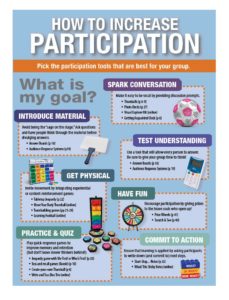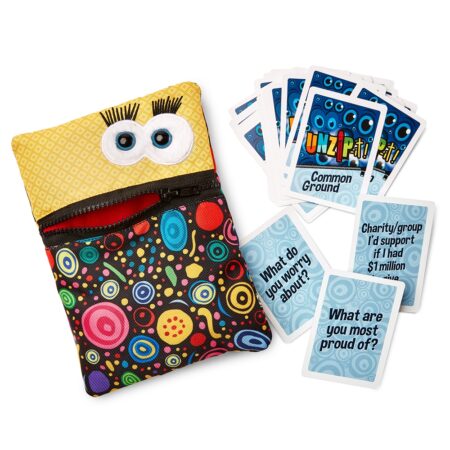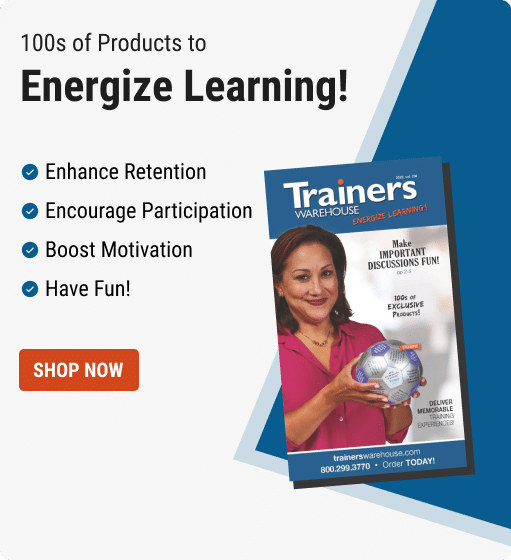For more Class Participation, Know your Goal
The more engaged students are in the learning process, the more they will absorb. While this makes intuitive sense, the assertion is also backed up by loads of brain research showing that when more areas of the brain are involved in an experience, the more memorable it becomes. So, to maximize learning, we must continue to engage the mind and the body, by offering physical experiences as well as cerebral ones, and stirring up learners’ emotions. None of this will happen if the “sage on the stage” stands there lecturing. Instead, we need to replace talking heads with participation. Click for Participation Infographic
 Participation 101
Participation 101
When I look at my kids’ report cards and their Schoology reports, I often see references and grades for “class participation.” When teachers or trainers ask questions, inviting learners to raise their hand to share a response, they put the onus on the student to single themselves out to share.
I don’t know about you, but when I was a teenager, I wasn’t the most confident or outspoken student–only a handful of students in my classes were. I wasn’t particularly shy but was still unlikely to raise my hand with an answer unless I really knew it. I grew up in the pre-Growth Mindset world, but even in the Carol Dweck era of today, where failure is appreciated as part of the learning process, many students (young and old) are still reluctant to participate in a roomful of peers.
Participation 202
Historically, we’ve thought of class participation in terms of participating in discussions or answering questions posed by a teacher or trainer. I think that’s what my kids are still graded on. However, as teaching formats have evolved, so must our understanding of what constitutes “participation.” Beyond talking and discussing, participation can involve, walking, standing, writing, drawing, clicking, and playing.
The challenge for teachers and trainers is to link their teaching and learning goals with an appropriate type of participation. Goals might include introduction of new material, practicing new techniques, improving memory, or committing to next steps. Depending on the goal, teachers may use a myriad of different tools to facilitate broad participation, rather than engaging only the handful of students who happen to raise their hands to speak.
Let’s explore 7 teaching goals and ways to make those efforts more participatory.
1) Introduce material
In place of lecturing, ask questions and have learners think through the material before divulging answers.
- Quick Response Answer Boards allow every participant to think up and jot down an answer. Have them raise their boards so you can quickly scan the room and get a sense of the group’s understanding.
- Audience Response Clickers give every person a chance to guess an answer, usually A-B-C-D or True-False. With these, facilitators can easily tabulate results. If everyone knows an answer, they can move along to the next topic. If not, they can take more time to delve into the correct and incorrect answers. Sometimes incorrect answers can lead to extremely interesting conversation.
- Jeopardy games aren’t just for reinforcement. They can be a super fun way to introduce new information. By chunking their presentations into categories and questions, facilitators can help learners begin thinking about material to which they’ve never been exposed.
- Flash cards aren’t flashy, but they can be a great way to activate the mind and body, as they can require writing, flipping, shuffling, sorting, walking, folding, etc.
2) CHECK understanding
Use tools that will allow EVERY participant to think of an answer, not just your fastest thinkers.
- Audience Response Systems (ARS) equip every participant with a clicker (or phone), so that players can key-in a response. Many ARS are best-suited to multiple choice and true/false answers, but some do allow players to give more complex answers.
- If you prefer open-ended questions and free-thinking questions, rather than prompting the group with multiple-choice answers, try dry-erase Answer Boards. Find ready-made boards or create your own. A variety of dry-erase surfaces are readily available.
- Write it and Show it on Paper. If you don’t have the time or budget to get fancy, plain ol’ paper works really well too — and can be recycled!
3) Get Physical & Have Fun!
If your goal is really just to get people moving around, you may not need to tie the movement to the learning curriculum. Simply getting the blood moving to different parts of the body can have a positive impact on learning.
- Energy Break Thumball. Catch the ball and act out the movement described on the ball.
- Tabletop Jeopardy. Have teams write questions for each other or come up and turn over a question card. It’s more active than listening to a question read by a teacher, for sure!
- Prize Wheels. Spinning a prize wheel can help groups pick questions, teams, categories, and prizes . . . or it can be a good excuse to get learners up and moving around. They can even spin to determine how many points they’ll get if they answer a question correctly. Be creative!
- Scratch & See. For maximum movement, have players stand up and pick a custom-made card, then scratch away. Make-your-own scratch tickets can also be great for prizes, team assignments, question categories and more.
- Paper airplanes and paper balls. Rather than having learners raise a hand to ask a question, ask them to write it out on paper then fold it into an airplane or squeeze it into a ball. They can then toss it to someone else to read.
4) Practice and Quiz
Play quick-response games to improve memory and retention. Be warned, however, that you run the risk of leaving slower thinkers behind. Following are some tools that reward quick recall, and ways to adapt them to include folks who need more time to think through their answer or feel shy about answering questions in a big group.
- Jeopardy game with Who’s First or Me First buzzer. Game buzzers add excitement to competitive games as teams race to buzz-in and answer questions first. They also help facilitators focus on the game content, rather than defusing arguments about who gets to answer a question.
- Adaptation: to engage slower thinkers in the game you might require every player on a team to come up with (or understand, or be able to explain) an answer before the team rings in.
- Toss and Recall games. Toss a ball or Koosh and have them remember a fact or answer a question.
- Adaptation: invite recipients to consult with someone next to them before sharing with the bigger group.
- Create-Your-Own Thumball / Beachball / (or Write and Toss Dice). Write questions or discussion prompts on the ball. Then, give it a toss and ask the recipient to respond to the prompt or answer the question under their thumb.
- Adaptation: have student teams write on the content reinforcement questions/prompts and see if they can stump one another.
- Adaptation: create three balls of varying difficulty.
5) Commit to Action
Ensure that learning is applied by asking participants to write down (and commit to) next steps.
- Start-Stop-Continue-Change. At the end of a learning module, discuss the take-aways. Ask the group what they’d like to START doing in the future; what they should STOP; whether they want to CONTINUE or CHANGE other actions.
- What? So What? Now What? The focus of these questions is: What have you learned? So what, what is the significance of the learning? Now what are you going to do or change going forward?
6) Spark Conversation
 For some, coming up with stuff to say can be a daunting challenge. A variety of tools call on visual metaphors, quotes, or discussion prompts to spark creativity and the flow of new ideas. And, they can be adapted to any topic in any discipline. Favorites include:
For some, coming up with stuff to say can be a daunting challenge. A variety of tools call on visual metaphors, quotes, or discussion prompts to spark creativity and the flow of new ideas. And, they can be adapted to any topic in any discipline. Favorites include:
- Photo Decks, which offer an array of thought provoking images. Challenge your group to find an image that reminds them of an important fact or concept or have them choose an image that reflects how they’re thinking or feeling. Then they can discuss why they picked the image they did.
- Discussion Prompt Cards. On each card is an open-ended question. Pick a card and ask someone else the question or go ahead and answer it yourself. With discussion prompt activities, the facilitator can decide whether everyone should answer and discuss the same prompt, or let each person pick a different topic. Using the later approach, you might cover more material, but not dig in as deeply or engage in rich dialogue.
- Thumballs. These require players to toss a ball, catch it, and respond to the prompt under their thumb. When using a tool like this, consider how well the group knows each other and what sort of discussion topics would be welcome. Do you need to avoid uncomfortable silences? Get to know each other better? Or, dig into more difficult topics about Stress, Diversity, Goals, Team Dynamics, etc.?
Finding Closure
The variety of examples above reflect that participation can look very different depending on the age of a group, content being covered, or where the group is within a learning process. No matter what the specifics, participation will help bring closure to learning events and make material more memorable.
Read more:
Increase Class Participation in Discussions
9 Ways to Increase Student Engagement

